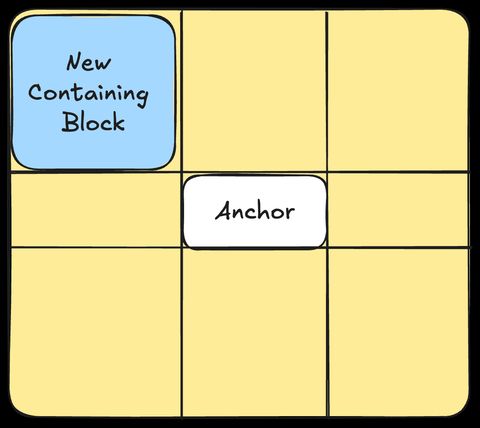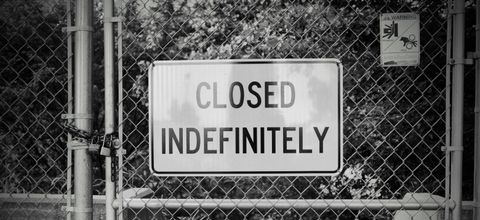How do we move logical shorthands forward?
There are several proposals, but one major road block
We’re trying to make progress on shorthand syntax for CSS logical properties. But the path forward depends on where we hope to be a decade from now.

It’s not just a shorthand for anchor()
position-area might be my favorite part of the CSS Anchor Positioning spec,
with a ton of features packed in to make things just… work.
But there’s no magic here, just a few key parts that work well.
Check out our Winging It conversations about design, frontend, and backend development.
Winging It episode 8: CSS Anchor Positioning in Practice
Winging It episode 16: Debugging CSS Anchor Positioning
Initially, position-area seems like nothing more than a shorthand.
Just replace top: anchor(bottom); left: anchor(right)
with position-area: bottom right and it works.
Or go even further, and replace that with position-area: end.
The examples in this article are best viewed in a Chromium browser, version 131 or later.
See the Pen position-area containing block by @jamessw on CodePen.
The idea behind position-area is that in most cases, you want your positioned
element to be touching a specific corner or edge of the anchor. position-area
creates a grid around the anchor, and lets you place your positioned element
within that grid.
Anchor-tool.com is a fantastic tool for exploring the different values for positioning an element within that grid.
But position-area is more than a shorthand for anchor(), introducing some
behaviors that may be surprising.
One of the key differences between using anchor() and position-area is that
position-area creates a new containing block for the positioned element.
If you are using anchor(), the positioned element’s containing block works
like normal. For a fixed position element, it will usually be the
viewport. For an absolute positioned element, it will usually be the
closest ancestor that has a position besides static. The anchor() function
then resolves to a length that positions the element as specified, within that
containing block.
position-area creates a containing block that does not map to an element.
Instead, it is defined by the relationship between the anchor and the anchor’s
containing block.
This containing block is generated by the grid area that you select using
position-area. For instance, with position-area: top left, the new
containing block starts at the top left corner of the anchor’s containing block
and extends to the top left corner of the anchor itself.

Note that the element we’re positioning doesn’t have to fill this entire area, but we’re choosing the container that we want to position our element inside of.
Using position-area also handles some defaults so that the positioned element
is placed near to the anchor, within its new containing block.
First, any inset properties like top or inline-start that don’t have values
set on the positioned element resolve to 0. This makes the containing block
fill the entirety of its grid area.
Then, align-self and justify-self are used to position the element close to
the anchor, by setting the alignment away from the specified grid area and
towards the non-specified grid area. If the grid area is center or span-all,
then the value is anchor-center.
Together, that means that position-area: top right is equivalent to the
following declaration using anchor().
.positioned-element {
bottom: anchor(top);
left: anchor(right);
top: 0;
right: 0;
justify-self: start;
align-self: end;
}See the Pen position-area positioning by @jamessw on CodePen.
As a side effect of being an absolutely positioned element with justify-self
or align-self set, your positioned element will have the behavior of smartly
shifting to stay within its original content block.
If, after applying padding and margins, your positioned element would overflow the newly created containing block but would fit inside its original container block, it will get shifted to prevent overflow.
In this example, the targets are all positioned with position-area: center.
The top and bottom targets are shifted toward the center because they would
otherwise overflow their original containing block, which is the div with the
dashed border. They are shifted just enough to be flush with their containing
block.
See the Pen position-area self alignment - absolute positioning by @jamessw on CodePen.
Note that in this example, the targets are position: absolute. If instead the
targets are position: fixed, the targets do not overflow their original
containing block (the viewport) and so no shifting happens.
See the Pen position-area self alignment - fixed position by @jamessw on CodePen.
You can opt in to this behavior with anchor() by setting a value for all of
top, right, bottom, and left, and setting a value for justify-self and
align-self. But position-area is much more terse.
One of the ways we observe a containing block is that percentages are resolved
in relation to the containing block. This means that padding: 5% on an element
positioned using position-area will have a padding of 5% of the size of the
containing block – the section of the grid that was selected.
See the Pen position-area containing block by @jamessw on CodePen.
In this case, the padding on the element positioned with anchor() is much
larger, since its containing block is the viewport, not the grid area created by
position-area.
position-area is available in Chromium browsers. It was initially called
inset-area, but was renamed in the Chromium 129 release.
The Anchor Positioning Polyfill does not
yet support position-area. This article was written as part of our exploration
into the spec, and if you would like to sponsor further development, please
get in touch!
If you found this article helpful, please sponsor our work! Deep dives like this take time and energy, and we want to keep them coming!
You can also hire us to develop the Anchor Positioning polyfill or another OSS language/tool you rely on. Our client work also helps fund our educational work like this article, so get in touch with us if you have any web development needs.
A huge thank you to the individuals and organizations sponsoring OddBird’s open source work!
We love contributing back to the languages & tools that developers rely on, from CSS & Sass to browser polyfills and Python. Help us keep that work sustainable and focused on developer needs!


There are several proposals, but one major road block
We’re trying to make progress on shorthand syntax for CSS logical properties. But the path forward depends on where we hope to be a decade from now.

Can we get this process unstuck?
The CSS Working Group recently resolved to add a size shorthand for setting both the width and height of an element. Many people asked about using it to set the ‘logical’ inline-size and block-size properties instead. But ‘logical shorthands’ have been stalled in the working group for years. Can we…

Are we responding to the right inputs?
For many years, it has been ‘best practice’ to use relative units (especially em and rem) for sizing text. That’s great! But after playing around with my user preferences, I think we can improve on the common approaches.